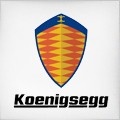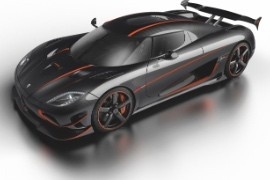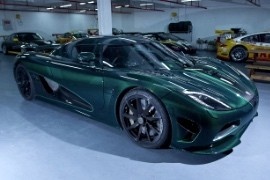
KOENIGSEGG Agera
Generations Timeline, Specs and Pictures

At the 2015 Geneva Motor Show, the small car-maker Koenigsegg unveiled the Agera RS.
It was a supercar developed to offer more performances on the track, but still legal to drive on the roads.
The Agera was one of the lightest cars on the road and the fastest car in the world. It was entirely built in-house. Apart from the brakes, tires, and the windshield wiper, everything is built by Koenigsegg and not by a third-part supplier. And one of the most expensive options on the list was the “One-megawatt” option, which increased the output up to 1360hp from the standard 1160 hp.
The Agera RS was based on the already famous Agera. It was built in 25 units between 2015 and 2018 and it featured a bigger air-intake for the engine, and other aerodynamic parts mounted on the car to increase the downforce.
Inside, there was a luxurious, yet sporty, interior. The seats were light, built on carbon-fiber support, and covered with Alcantara. The dashboard could have been customized by its clients.
The engineering part of this hypercar was the most important part. The main ingredient used for the bodywork was the carbon-fiber. Even the wheels were hollow and built from the same material. The 5.0-liter V8 engine was built from the ground up by Koenigsegg and the gearbox was developed in-house, following new engineering concepts. The Agera RS was the ultimate track tool, while still being able to be registered for road use worldwide, as it complied with the safety standards and other necessary homologation features.

Koenigsegg celebrated its 15th anniversary with the launch of a new model, named Agera.
The Swedish producer released the Agera as a response to the Italian dominated world of supercars such as Lamborghini and Ferrari. Koenigsegg stayed true to its original philosophy and kept some of the shape and size of the original CC, which was created 19 years ago.
Surprinsingly, the Ager was lighter, more aerodynamic and more powerful than a McLaren F1. The striking V8 engines produced 910 bhp with over 1.000 Nm of toruqe and the car reached 60 mph in 3 seconds, and 100 km/h in no more than 3.1 seconds. The engine was paired with a specially made 7-speed dual-clutch gearbox and a new traction control system.
Both the front and the rear brakes are equipped with ventilated ceramic discs with 6-piston calipers. The front and the rear suspensions are equipped with adjustable dampers.
The chassis of the Agera is made out of carbon fiber and an aluminum honeycomb structure. The hardtop of the car is stowable under the front hood lid.
The interior comes with a neat feature designed by Koenigsegg; ghost lightning which uses invisible nanotubes to shine through billet aluminum buttons and other surfaces creating excellent symbol visibility and a cool look. The racing style of the Agera is also boosted by the use of carbon fiber throughout the interior as well as a new instrument cluster able to show a G-meter, power meter, lap times and other road/track aids.

Koenigsegg introduced the Agera S in 2013 for specific markets where the particular E85 gasoline was not available.
While the regular vehicles might not feel a difference between an E85 fuel and regular unleaded gasoline, the high-performance sports cars were sensitive about that. Koenigsegg knew that, even in countries not specifically rich, there were potential customers. For them, the Swedish carmaker built the Agera S. The carmaker produced only five of them.
Its exterior design looked almost identical to the Agera R. Its active aerodynamic systems allowed it to provide 300 kg (661 lbs) of downforce at 300 kph (186 mph). It was a hypercar built to race most other supercars in the world. Unlike the Agera R, the S version sported the new Hollow Space Carbon Fiber Aircore wheels, reducing the suspended masses even more than its fierce racing Agera R sibling.
Like the R model, the S featured a removable roof, which the driver could have store under the front hood’s lid. Inside the cockpit, the carmaker installed a carbon-fiber and Alcantara combination, leading to a luxurious yet sporty interior.
Under the hood, Koenigsegg installed the same 5.0-liter V-8 engine aided by two turbochargers. It offered over 1030 hp and ran on regular, 98 RON gasoline. Its sibling, the R, and the rest of its siblings could unleash their true potential only with E85 gasoline. But not the S. The S provided everything with regular fuel.

The Koenigsegg Agera R came by in 2011 at the Geneva Motor Show.
Based on the standard Agera exotic, the R version comes with more power, upgraded brakes and an active rear wing producing 300 kg of downforce at 250 km/h. Specially made Michelin Supersport tires make sure the car can pull 1.5 Gs around the corners.
Also, the Agera R broke 6 land speed records for a production car, including the 0 to 300 km/h to 0 in 21.19 seconds. Later on in 2012, the car received some upgrades coming as more carbon fiber parts (wheels included), aero mods and engine tuning to work even with lower-grade fuel.























































